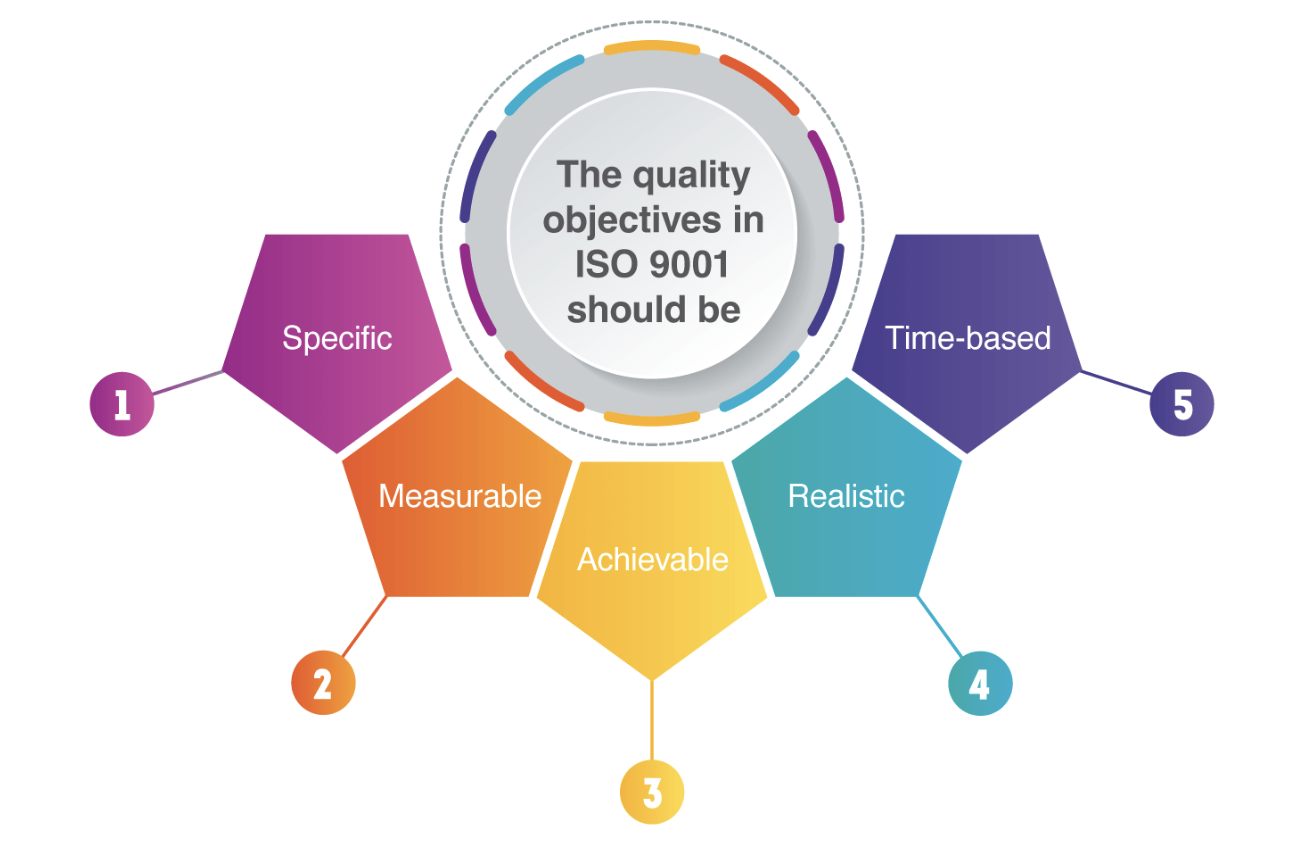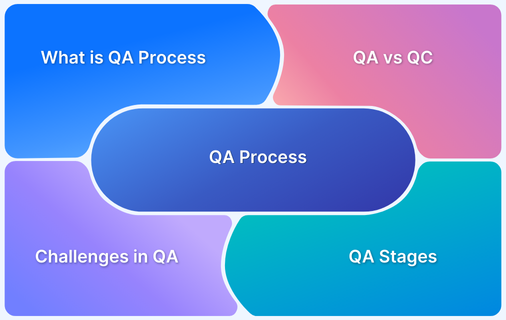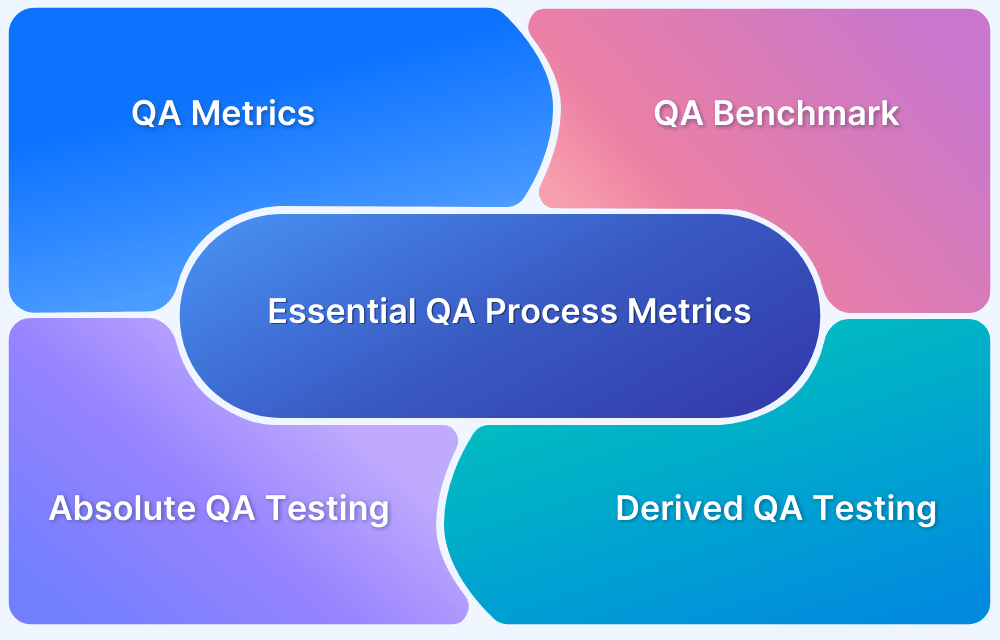How to set goals for a QA Tester to Improve Software Quality
By Sakshi Pandey, Community Contributor - November 26, 2024
Businesses which develop quality software foster trust among the consumer market and incline them to be more willing to trust and invest in their brand. Therefore it’s obvious that it’s very important to make a good impression on the first try when releasing a software product, this being particularly true for startups.
This is where quality control comes in, quality control is crucial throughout the software development process. Small errors that go unnoticed could result in significant financial losses. Executing rigorous quality assurance checks is necessary to prevent the release of a subpar product. QA should be present during each step of software development to establish everything is operating as intended and the procedures used to develop the application are robust.
This guide discusses how to set goals, and how to implement certain QA techniques, to improve software quality.
Importance of Software Quality Assurance
Software QA is crucial in software development:
- Ensures reliable, bug-free software for users.
- Improves user satisfaction through consistent performance.
- Reduces long-term costs by identifying issues early.
- Enhances software security by detecting vulnerabilities.
- Boosts software maintainability and scalability.
- Facilitates compliance with industry standards and regulations.
- Supports efficient development by refining processes.
- Increases stakeholder trust through quality delivery.
- Prevents project delays by detecting defects early.
- Fosters better collaboration between developers and testers.
Measures of Software Quality
Here are some of the measures of software quality:
- Reliability: This is the ability of a software application to continue operating properly for users. A software can be considered reliable if it is available and not prone to frequent shutdowns, it should also be recoverable in case of failures, and it should be accurate in performance.
- Performance: This metric is used to measure start up, performance, and recovery time in order to evaluate a software’s capability and stability under significant demand.
- Functionality: This metric checks whether the software satisfies the agreed upon primary functional requirements. It is needed to ensure that the software has the desired specifications and isn’t prone to failure or non-functional.
- Usability: The software in question is designed with certain users in mind. It’s essential to measure the capability of the software to be used to achieve certain tasks in an effective, easy to use manner. Usability metric takes into account the appearance, responsiveness, and stability of the software to measure how useful it is.
- Supportability: Software should be supportable and easy to maintain over the course of its life. In order to keep a software up to date and functional it will need to be scalable and easy to test, alter, and scale. This metric measures the ease with which these support functions could be performed.
How to Set Goals to Improve Software Quality
Here are some of the key best practices to follow when you set goals for improve software quality:
1. Plan Ahead for Future Changes
There are numerous elements involved in software applications such as libraries, other applications, and so on. These elements are in a constant state of flux, and as they evolve it is necessary for the software to evolve with them. External factors such as hardware and web browsers are similarly always changing, and software needs to be updated to keep up with the times.
How can this constant state of flux be accounted for during software development?
By keeping in mind that these changes will occur it can be planned for in the development process by introducing monitored checks for the most changeable elements.
Additionally, the interdependence between the software being developed and elements that are likely to be highly variable can be minimized. By introducing Future Proof Testing practices to manage the constant state of change the software quality can be maintained more efficiently.
2. Manage and Reduce Quality Risk
Testing lowers the likelihood of undetected errors even if it cannot completely remove the danger of quality issues. It’s important to choose tests that are related to the most important quality risks for the software. This allows the most vital points of the software to achieve the best level of quality risk management.
If tests are conducted in risk order, the largest amount of risk reduction is attained early in the test execution process. Before releasing the software into production, the project team can use a risk-based testing technique, this allows them to know exactly how much quality risk there exists for their product and reduce it.
3. Generate Information from all Stakeholders
While developing and testing the software, the main criterias to determine whether the software is high-quality, are determined according to the needs of the project’s stakeholders.
Therefore it’s important to collaborate with all stakeholders to come up with information regarding the criteria, and benchmarks for the quality standards of the project. With information from the stakeholders the metrics of software quality discussed earlier can be prioritized and elaborated upon to quantify the quality of the software.
By having clear communication with all Stakeholders OKRs and goals can be better defined. The information gained in this process is vital to make more informed decisions planning test cases, identifying defects, and developing better code for the software application.
BDD Testing helps improve collaboration between different stakeholders at every stage of testing and ensure comprehensive testing.
Also Read: How to achieve Advanced BDD Test Automation
4. Plan to Reduce Risk
Another crucial aspect of guaranteeing the quality of a software product is risk reduction. One of the best things you can do before starting development is to brainstorm potential problems and risk factors.
Once a case has been established for the risks that specific project components may pose, these risks can be categorized and then, in accordance with priority, contingency plans can be developed to handle them as necessary. Risk-based Testing in Agile helps address the risks and reduce them significantly.
5. Set SMART Goals
SMART goals are Specific, Measurable, Achievable, Relevant, and Time-based Goals. These have objective to achieve certain milestones in said time.
Set SMART goals to improve software quality –
- Specific: Define precise objectives which have a very clear scope. Also identify clearly what needs to be achieved.
- Measurable: To determine whether a goal has been attained, it is crucial to be able to quantify the progress that has been made towards the objective. For example: test coverage.
- Achievable: The goals set should be reasonable according to the time and resources at hand. The essential result sought should be achieved in the allotted amount of time, and within the allotted budget.
- Relevant: The goals ought to be significant to the QA team as well as the other stakeholders. The team members of the project should be moving in the right direction with every goal defined.
- Time-based: It is best to give goals a start and a completion date to prevent it from being neglected due to the flurry of daily activities. By dividing the job into manageable sprints, using an agile testing approach makes it easier to achieve all the goals set.
Read More: How to set goals for Software Quality
6. Monitor and Evolve the Objectives as the Project Progresses
Goals are not set in stone, and it is crucial to regularly assess them to make sure they are still pertinent to the project. Goals should evolve if they are not meeting the overall requirements anymore and conform to newly established quality standards and user expectations as needed.
Software Testing Strategies, Objectives, and Approaches should be evaluated from time to time and should be updated regularly to ensure high quality in line with the evolving business requirements.
Test Techniques for Improving Software Quality
Test Techniques enhance software quality significantly. Here are different test techniques that improve software quality:
1. Use Automation Testing
As the project’s scope expands and more complexity is added, conducting tests manually becomes more and more impractical. The standard and quality of the software can be greatly improved by utilizing automation testing instead of manual testing, which is time-consuming, expensive, and subject to human error.
The Automation Testing Market size exceeded USD 15 billion in 2020 and is anticipated to continue to grow 16% annually from 2021 to 2027. This is indicative of how lucrative it can be to develop automated test cases for software applications from the beginning.
Writing automation test scripts is made easy using automation frameworks like Selenium, Appium, Cypress, and Playwright. These scripts can be run on a plethora of real devices, operating systems, and browsers as needed.
Users that want to automate and test their apps will benefit immensely from tools such as Browserstack Automate; This test automation tool provides integration with a variety of automation frameworks like Selenium, an established open-source automation framework, to enable testing on more 3500+ desktops, browsers, and real mobile devices.
2. Carry out Cross Browser Testing

Cross browser testing remedies this problem and allows the QA to confirm that the web application can be accessed by all potential customers. Cross-browser testing can be used to determine whether the software looks as it should and is able to function according to the required specifications.
Browserstack Automate can be utilized to carry out cross-browser testing using automation frameworks like Cypress and Selenium. Web applications can easily be tested without any knowledge of programming as well as manually with BrowserStack Live across the 3500+ desktop browsers and real mobile devices available on BrowserStacks’ Real Device Cloud.
Try Cross Browser Testing on Real Devices
3. Test Early
Early and frequent testing is critical in enhancing software quality. Early testing will make sure that any minor flaw doesn’t snowball into a more significant problem. The consequences of leaving certain bugs unattended can be dire, the defect can cause other defects to proliferate until there’s an infestation on your hands that could have been easily fixed if only you’d discovered it earlier.
4. Testing on Real Devices
Emulators and Simulators, although advertised to behave like real devices, don’t react the same way as real devices do. They only mimic the device platforms and not taking any real user conditions into account. That’s why it’s highly advised to run test scripts on real devices.

Additionally, it can help the QA obtain a better picture of how the application looks visually across various real devices.
Run Automation Tests on Real Devices
5. Implement Exploratory Testing
In order to view the software application from the eyes of the user it’s important to utilize testing methods such as ad hoc or exploratory testing. A human doesn’t behave the way automation test scripts do; they behave randomly and in a rather unstructured way, leading them to discover bugs and issues that an automated test script won’t.
Exploratory testing consists of a haphazard test designed on the spot and executed right after it’s written. This kind of test is a replication of how a user may interact with the application in real life. It produces unexpected bugs which can then be flagged and reverted to a developer to be fixed.
6. Try Ad Hoc Testing
Upon completion of all other tests it’s useful to carry out ad hoc testing. This type of testing is done with random data and chaotic, unorganized procedures. This arbitrary testing method is employed to find any defects that may have been missed by the prior formal tests.
Conclusion
Every planned action during the course of a project should be accompanied with a concrete, quantifiable result. Setting goals with the intent of improving software quality is essential for the efficient execution of any high standard software project.
This guide explains how to evaluate and enhance a product’s software quality as well as how to define objectives for QA testers.





